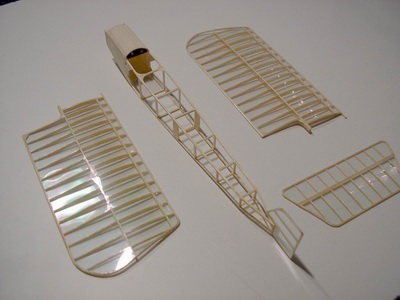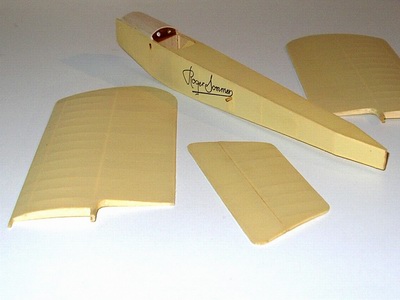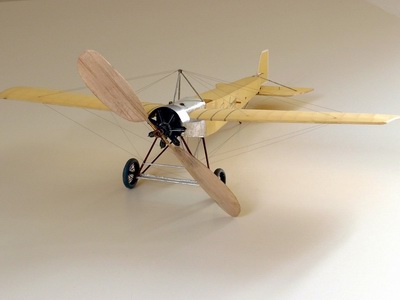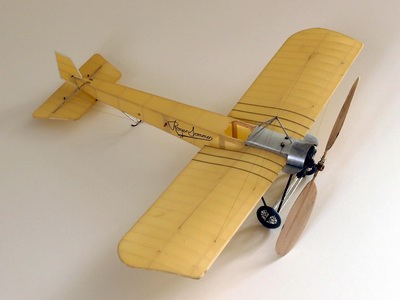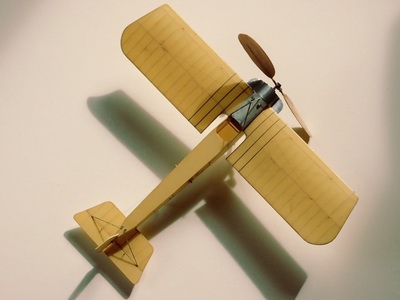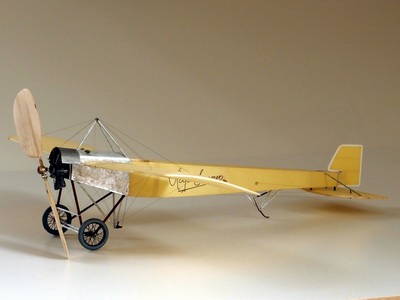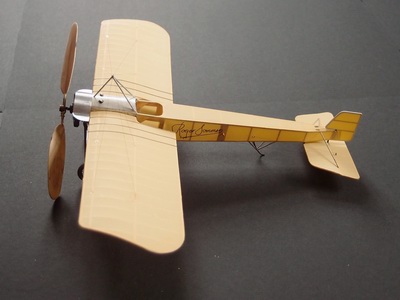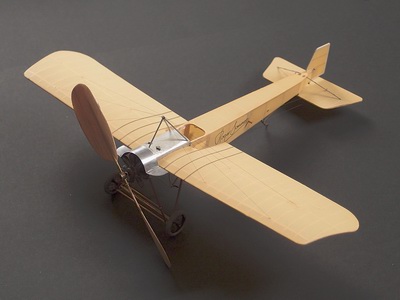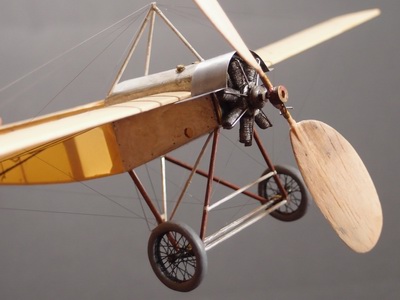Sommer monoplane, flown by Léon Bathiat early 1912
Click on an image to see it in high resolution
About the model
A peanut by Andrea Hartstein, based on a plan by Jean-Francis Frugoli, but with some changes to increase scale fidelity. As it is a very short nosed subject, every effort was made to build it as light as possible. Still, it requires a lot of nose weight, the propeller and engine assembly weighs as much as the rest of the model. It is covered with heat shrunk thin mylar film, air brushed with acrylic paint. The fuselage was covered with pre-painted mylar due to the "Roger Sommer" logo (which was done by hand with a felt tipped pen), the rest of the model was painted after covering. Trimming the model took quite a long time. At first it behaved very erratically, and could all of a sudden fall into a tight stalled turn, from which there was no recovery. It turned out that the propeller was just too large for the scale sized fin. After cutting down the propeller (which is still on the largish side) consistency improved markedly, and it is now a reliable flier.
Some data:
Span: 29 cm
Weight (without rubber): 6.0 grams
Best flight: 65 seconds
About the origial
A monoplane design by Roger Sommer dating from 1911. The first aircrafts built had an uncovered aft fuselage, and details such as wing root cut-outs and number of
stabilizer struts varied between different machines. It was a successful design, popular with pilots looking for a fast sporting aeroplane, and the french military also bought a number of these monoplanes. As is sometimes the case with early aircraft, the model designation is a bit cloudy. This design has been labeled both as "type E" and "type F". Another designation is "type Deperdussin", as is shares a number a features with the famous Deperdussin monoplanes.
In 1912, Sommer sold his company, but the new owners continued production of the design, now known as the Bathiat-Sanchez monoplane. Late models featured a curved rear fuselage top and an improved horseshoe-type engine cowling.
